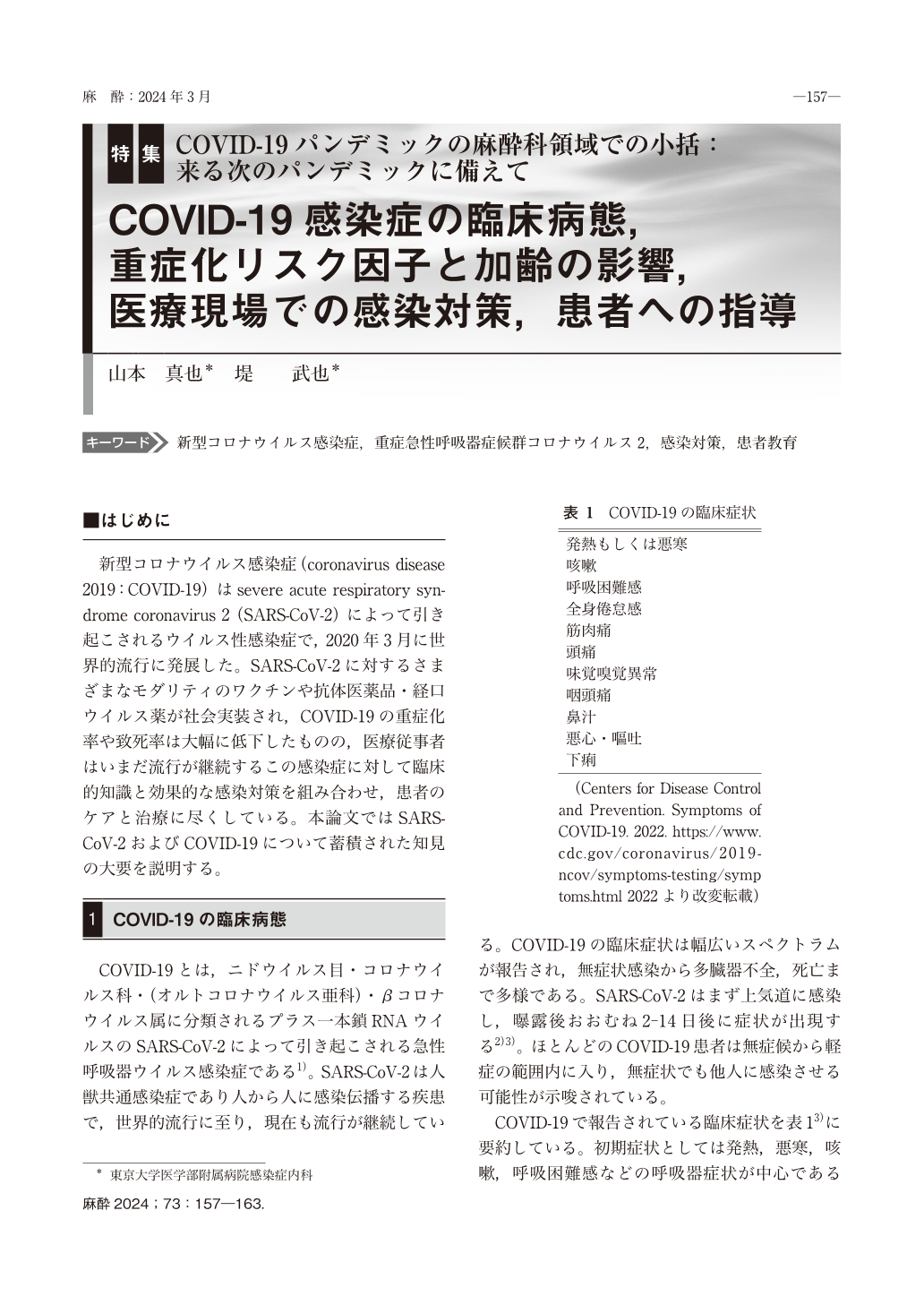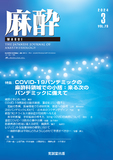Japanese
English
- 有料閲覧
- Abstract 文献概要
- 1ページ目 Look Inside
- 参考文献 Reference
はじめに
新型コロナウイルス感染症(coronavirus disease 2019:COVID-19)はsevere acute respiratory syndrome coronavirus 2(SARS-CoV-2)によって引き起こされるウイルス性感染症で,2020年3月に世界的流行に発展した。SARS-CoV-2に対するさまざまなモダリティのワクチンや抗体医薬品・経口ウイルス薬が社会実装され,COVID-19の重症化率や致死率は大幅に低下したものの,医療従事者はいまだ流行が継続するこの感染症に対して臨床的知識と効果的な感染対策を組み合わせ,患者のケアと治療に尽くしている。本論文ではSARS-CoV-2およびCOVID-19について蓄積された知見の大要を説明する。
Coronavirus diseases 2019(COVID-19)are viral infections caused by Severe Acute Respiratory Syndrome Coronavirus 2(SARS-CoV-2). The clinical features of COVID-19 have been reported to range from asymptomatic infections to critical illness. After an initial viral infection phase, some patients develop severe COVID-19 due to complications arising from an excessive host immune response, such as cytokine storms. Patients at risk for severe illness may progress from pneumonia to acute respiratory distress syndrome, other cardiovascular complications or thromboembolism. The risk factors for severe illness announced by the Centers for Disease Control and Prevention include increasing age, immunodeficiency, disability, and comorbidities, especially in the elderly, who are more likely to have chronic diseases and/or a past medical history likely to increase mortality. Nosocomial COVID-19 remains an important problem and infection control measures must be updated to remain effective. Patient education also plays an important role in COVID-19 infection control and treatment. SARS-CoV-2 is expected to continue to emerge with new variants and repeat epidemics, forcing patients at risk for severe illness and healthcare providers to continue to take appropriate infection control measures. This article focuses on the clinical presentation of COVID-19, risk factors for severe illness, the impact of aging, infection control in hospitals, and patient education.

Copyright © 2024 KOKUSEIDO CO., LTD. All Rights Reserved.


